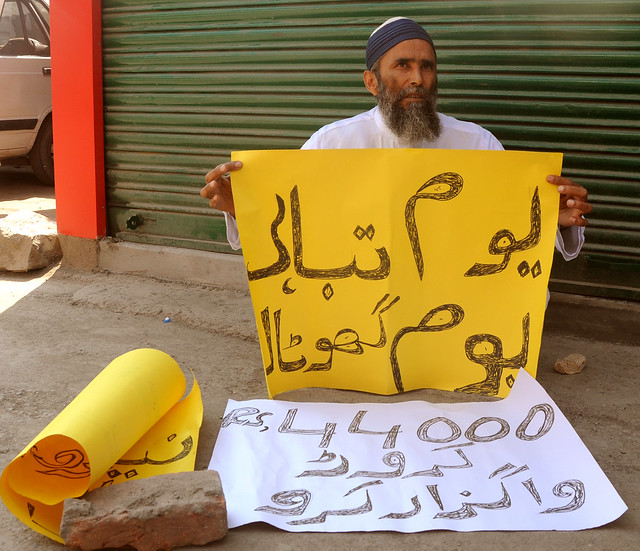By Bilal Ahmed Malik for TwoCircles.net
The concept of culture is fundamental to sociological and anthropological discourse. E. B. Tylor, a prominent pre-modern anthropologist, has given an inclusive definition of culture. He defines culture as, a complex whole which includes knowledge, belief, arts, morals, law, custom, and any other capabilities and habits acquired by man as a member of society.
This definition proposes that culture encompasses all aspect of human life whether be it behaviour, religion, social organisation, or nature of economic and political structures. It implies that people’s likes and dislikes and aspirations and inspirations are directly or indirectly influenced by the culture wherein they are raised. Unlike biological or physical traits, cultural ideals aren’t inherited through the mechanism of genetic coding; rather, they are learnt, experienced and acquired. The younger generation obtains its cultural determinants from the elder generation through conscious and unconscious social interactions.

The process of learning and acquiring culture is called as enculturation and is applicable in all situations whether peaceful or violent. In both cases, the younger generation is supposed to observe, adopt, and adjust what the elder generation has passed on to them. In this way, the collective sentiments of the people are continued and old traditions are kept alive.
Now the question arises that do things work in similar manner when it comes to a conflict situation? To answer this question let’s examine and understand the things in the light of conflict culture theory. Sociological theorists have defined conflict culture as a situation when two different cultures come in contact position and there is clash of interest. This definition margins the scope of conflict culture to a particular type of social change that emerges as a result of two or more interacting cultures. However, I take a different position as I believe that theoretically conflict culture could be also applied to a situation when the entire organisation, collective consciousness, and hierarchy of demands of a society are hit with consequences of a longstanding political or armed conflict.
The principal determinants of cultural structure of that society are often exposed to uncertain and violent contexts. The people living in these conflict areas experience worst kind of living conditions and eventually develop sense of alienation towards the established political system.
They believe that this vague relationship has strong bearings upon their socio-economic and intellectual development and practically define it in terms of you and us. Eventually, once a counter- culture, against the dominant socio-political order, becomes wider public opinion and popular psychological and behavioural disposition. As a result, through all available means of learning, whether be it situational, social or symbolic, the elder generation passes a heritage of unfulfilled promises, psychology of distressed emotions, sense of disengagement and a relation of distrust to its younger generation.
To my understanding, after living in a conflict for decades, conflict culture is not an enduring phenomenon like any gradual social transformation. Instead, it is a situational response to a violent context- the violent context can be anything like political, religious, and ethnic – that could withstand for a longer period of time. If this situational manipulation of behaviour is neglected then there is possibility it could become a transgenerational phenomenon. Nevertheless, if the violent context is eliminated quite well on time, people would eventually return to their normal behaviour.
For example, in 1947 when India and Pakistan divided their borders, the final political settlement of Kashmir remained an unsolved issue between the two regional nuclear powers. Seventy years down the line, Kashmir has become one of the bloodiest conflict hit areas in the world. Due the negligence of the then political leadership, the people of Kashmir have been experiencing wretched and miserable life conditions. Under the coercive mechanism of state policies they are pushed to respond vulnerability and violent manifestation of conflict. What this conflict did to the people of Kashmir is in front of the whole world. Symptoms such as depression, frustration and lack of creative expression are common personality traits in Kashmir. This personality moved into the next generation, resulting in the permanency of a negative tradition.
For instance, if we take the example of stone pelting, we can easily understand how things move from person to person and generation and to generation in a conflict culture situation. The incidents of stone pelting were hardly seen in Kashmir if we turn just 10-12 years back. But once it began, it did an unpredictable damage. Now, the number of stone pelting youth has grown by tenfold. In spite of knowing the fact that stone can’t win over the bullet yet these emotionally distressed youth would come out of their houses and took streets.
The expression of asking for denied rights, a cultural trait they learnt from their elders, motivates them to take this risk which may even cast their life. Holding small stones in hand and receiving bullets and pallets on their unshielded and unarmed bodies, I feel, they enjoy a physiological win over their opponent. This physiological win potentially empowers them and for that movement of time they feel like celebrating the joy of freedom. It reduces the fear to a level where death seems much easier than life. To conclude, I propose, any form of power manifestation is not going to stop this psychological win. It has become a cultural trait and it will continue as long as the conflict culture continues.
The author is a research scholar at Centre for Central Asian Studies, University of Kashmir

